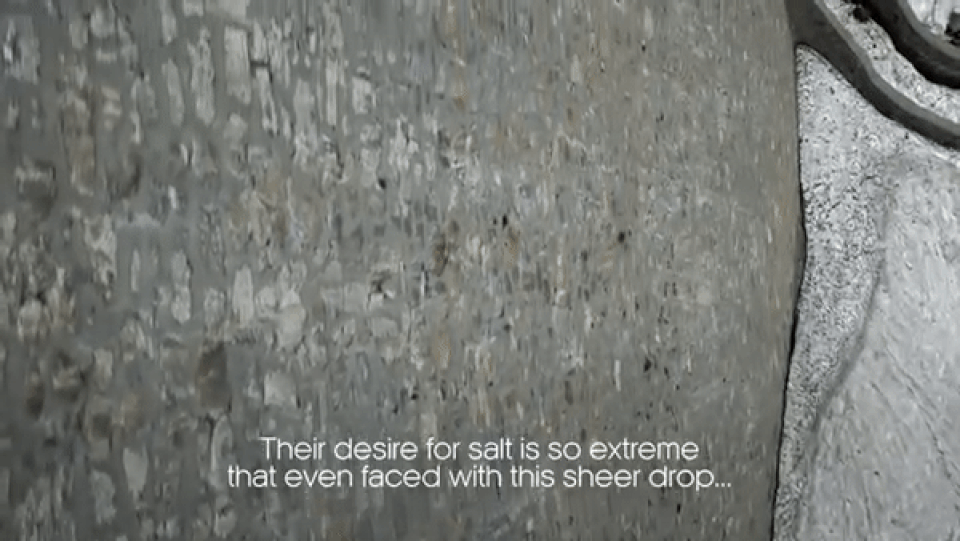Herds of goats “defy” gravity, climbing almost vertical cliffs in search of mineral salts.
The Alpine Ibex is a mountain goat-like herbivore that lives in the highest peaks of the European Alps. They use their hooves like pincers, plus their agility and dexterity to conquer the steepest cliffs. Thanks to this, it also helps them avoid most predators.
However, the ability of the Alpine Ibex goat to climb almost vertical cliffs is what makes many people admire.
 The almost vertical cliff at the Cingino dam is a valuable source of mineral salts for goats
The almost vertical cliff at the Cingino dam is a valuable source of mineral salts for goatsThe Cingino Dam, located in the Piedmont region of Italy, is just one of many dams built in European countries. But in the past few years, this place has accidentally become a tourist attraction since tourists shared videos or pictures of mountain goats climbing steep cliffs of nearly 90 degrees, 50 meters high, attracting attention. attention from the online community.

When watching the videos, you can easily understand why millions of people around the world are so fascinated.
In spring and summer, Alpine Ibex goats live in grassy or coniferous areas. Before the harsh winter comes, they have to accumulate fat and hide in the Alps to avoid the cold.
 Thanks to their special hooves, they help them maintain balance and climb high
Thanks to their special hooves, they help them maintain balance and climb highLike many other herbivores, this goat lacks essential salts and minerals because they are not found in the grass they eat every day. The higher the need for salt, forces them to find it themselves.
And the precious natural source of salt is located in the dam walls. Although the dam is 50 m high and has steep walls, it does not cause problems for the Alpine Ibex goats.
They are considered master mountain climbing “artists” when climbing quickly thanks to rubber-like foot pads and split hooves to help maintain balance. Thanks to that, they can enjoy the precious mineral salts located on the dam walls.
The video attracted millions of views, showing a herd of goats standing precariously on the dam wall as if “floating” in the air, making viewers’ hearts flutter.
 Enjoy the precious mineral salts containing lots of Calcium on the dam walls
Enjoy the precious mineral salts containing lots of Calcium on the dam wallsInterestingly, although praised for their skillful climbing ability, not all Alpine Ibex goats are so agile and skillful. Normally, males rarely appear on cliffs. Because they have a large body mass (up to 100 kg) and bulky horns, it is difficult to balance. Only females and juveniles are most commonly seen on dam walls.

In the 19th century, due to overhunting for meat and horns for medicinal purposes, the number of Alpine Ibex goats rapidly decreased, with only about 100 individuals remaining in the western Alps.
Fortunately, thanks to conservation efforts and the establishment of the Gran Paradiso National Park, this goat species returned to the area, multiplied and developed. To date, there are about 50,000 individuals in the Alps.






